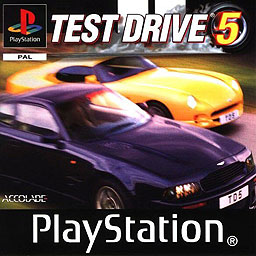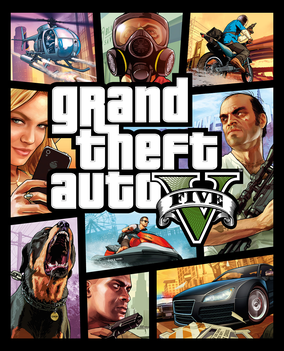
Uplink is a simulation video game released in 2001 by the British company Introversion Software. The player takes charge of a freelance computer hacker in a fictional futuristic 2010, and must break into foreign computers, complete contracts and purchase new hardware to hack into increasingly harder computer systems.

New World Order is a 2002 online team-based tactical first-person shooter video game, similar to Counter-Strike. The game was developed by Swedish studio Termite Games.

Unreal Tournament is a first-person arena shooter video game developed by Epic Games and Digital Extremes. The second installment in the Unreal series, it was first published by GT Interactive in 1999 for Windows, and later released on the PlayStation 2 and Dreamcast by Infogrames in 2000 and 2001, respectively. Players compete in a series of matches of various types, with the general aim of out-killing opponents. The PC and Dreamcast versions support multiplayer online or over a local area network. Free expansion packs were released, some of which were bundled with a 2000 re-release: Unreal Tournament: Game of the Year Edition.

Darwinia is a 2005 real-time tactics and real-time strategy video game for Microsoft Windows, Mac OS X and Linux. It is the second game developed by Introversion Software, and is set within a computer environment that simulates artificial intelligence. It received favourable reviews and won three awards at the 2006 Independent Games Festival. A multiplayer sequel, Multiwinia, was released for Windows in 2008. Darwinia and Multiwinia were released together as Darwinia+ for the Xbox 360 in 2010.

SWAT 3: Close Quarters Battle is a 1999 tactical first-person shooter video game developed by Sierra Northwest and published by Sierra Entertainment exclusively for Microsoft Windows. It is the seventh installment of the Police Quest series and the third installment in the SWAT subseries. SWAT 3 follows the Los Angeles Police Department (LAPD) Metropolitan Division SWAT team as they combat a wave of violent crime and terrorism in Los Angeles in the lead-up to a nuclear disarmament treaty signing.

Star Wars: Empire at War is a 2006 real-time strategy video game developed by Petroglyph Games and published by LucasArts for Microsoft Windows and Mac OS X. Set between Episode III and Episode IV, it focuses on the fledgling struggle between the Empire and the Rebels. It uses Petroglyph's game engine Alamo. In October 2006, an expansion titled Star Wars: Empire at War: Forces of Corruption was released. On May 31, 2014, online functionality, including network multiplayer and wireless chat, was discontinued after Glu Mobile's purchase of GameSpy and the subsequent shutdown of all game servers. As of September 1, 2017, the multiplayer has been re-enabled on the Steam version with Workshop support added.

Grand Prix 3 is a computer racing simulator developed by MicroProse's UK development studio in Chipping Sodbury and published by Hasbro Interactive, released in July 2000. The expansion pack, "2000 Season", was developed by Simergy and published by Infogrames Interactive.

Call of Duty 2 is a 2005 first-person shooter video game developed by Infinity Ward and published by Activision in most regions of the world. It is the second installment of the Call of Duty series. Announced by Activision on April 7, 2005, the game was released for Microsoft Windows on October 25, 2005, and as a launch title for the Xbox 360 on November 22, 2005. Other versions were eventually released for OS X, mobile phones, and Pocket PCs.

Vietcong is a 2003 tactical first-person shooter video game developed by Pterodon in cooperation with Illusion Softworks and published by Gathering for Microsoft Windows. It is set during the Vietnam War in 1967.

CSI: Crime Scene Investigation is a video game based on the CSI: Crime Scene Investigation television series. The game was developed by Radical Entertainment, published by Ubi Soft, and was released for the PC in 2003. It was also ported by EPCConnect, and published by Aspyr on the Macintosh.

SWAT Force is the first game of the Police Quest series to be released for mobiles, developed by French studio Kaolink. The player controls a two-man team and tries to rescue hostages, arrest suspects and secure weapons. It was released February 28, 2006.

Starship Troopers is a first-person shooter game developed by British company Strangelite Studios and published by Empire Interactive. The game is based on the 1997 movie of the same name by Paul Verhoeven.

Test Drive 5 is a racing game developed by Pitbull Syndicate and published by Accolade for PlayStation and Microsoft Windows in 1998.

Section 8 is a first-person shooter video game developed by TimeGate Studios and published by SouthPeak Games. It utilizes the Unreal Engine 3 and was released for Microsoft Windows, PlayStation 3 and Xbox 360. It was released in September 2009 for Xbox 360 and PC, and for the PlayStation 3 on March 25 in North America and April 15, 2010, in the PAL region.

SWAT: Global Strike Team is a 2003 tactical shooter video game developed by Argonaut Games and published by Vivendi Universal Games for the PlayStation 2 and Xbox. It featured a new game engine developed by Argonaut developed to push the lighting capabilities of the Xbox and was the first SWAT game to ship on console systems. The game was inspired by the strategic elements of SWAT 3 with the instantly accessible arcade action of the Virtua Cop series.

Mount & Blade: Warband is the standalone expansion pack to the strategy action role-playing video game Mount & Blade. Announced in January 2009, the game was developed by the Turkish company TaleWorlds Entertainment and was published by Paradox Interactive on March 30, 2010. The game is available as a direct download from the TaleWorlds website, through the Steam digital distribution software, as a DRM-free version from GOG.com, or as a DVD with required online activation. The macOS and Linux versions were released on July 10, 2014, through Steam.

Grand Theft Auto V is a 2013 action-adventure game developed by Rockstar North and published by Rockstar Games. It is the seventh main entry in the Grand Theft Auto series, following 2008's Grand Theft Auto IV, and the fifteenth instalment overall. Set within the fictional state of San Andreas, based on Southern California, the single-player story follows three protagonists—retired bank robber Michael De Santa, street gangster Franklin Clinton, and drug dealer and gunrunner Trevor Philips, and their attempts to commit heists while under pressure from a corrupt government agency and powerful criminals. Players freely roam San Andreas's open world countryside and fictional city of Los Santos, based on Los Angeles.

Jamestown: Legend of the Lost Colony, also known as simply Jamestown, is a vertically scrolling shooter developed and released by Final Form Games in 2011. The game takes place on Mars in an alternate history steampunk 17th century, where the planet is a British colony contested by the Spanish and the indigenous Martians.

Dungeon Hunter: Alliance is a hack and slash action role-playing video game developed and published by Gameloft in 2011. The game is a remake of the 2009 iPhone game Dungeon Hunter, with the addition of a multiplayer mode and support for the PlayStation Move controller.
NBA Inside Drive is a series of video games based on National Basketball Association, published by Microsoft Studios. Its main competition was NBA Live, a series from Electronic Arts.



















